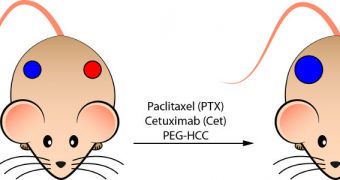A combination of chemotherapy, radiotherapy and carbon-based nanoparticles could work wonders against head-and-neck cancers, investigators at the Rice University say. They explain that the nanoscale compounds are extremely effective at boosting the efficiency of chemotherapy.
In addition to these benefits, employing nanoparticles in the treatment of cancers could also lead to the development of more personalized courses of treatment. Creating custom-tailored therapies for each individual is one of the most important goals in medicine today.
Working together with colleagues at MD Anderson, the Rice experts were able to create clusters of carbon nanoparticles that show great promise for transporting drugs used in chemotherapy cocktails straight to tumor sites.
By using these means of transportation, the amount of interactions that now takes place between the powerful drugs and healthy tissue would diminish considerably. This would result in less sickness and side effects for cancer patients.
The nanoscale clusters the group created can trap drug molecules inside, and hold them contained until the entire structure travels to a tumor site. It's only there that the carbon capsules open, releasing the active agents over a localized area, where they have the maximum amount of effect.
Additional details of how the approach works were presented in this month's issue of ACS Nano, a scientific journal edited by the American Chemical Society. Rice chemist James Tour and MD Anderson head-and-neck surgery professor Jeffrey Myers led the investigation.
Tour is a renowned world expert on nanotechnology. He holds an appointment as the T.T. and W.F. Chao Chair in Chemistry at Rice, and is also a professor of mechanical engineering and materials science, and of computer science, at the university.
The carbon clusters he and his Rice group developed are hydrophilic, meaning that they repel water. Each of the structures was augmented through the addition of a chemical called polyethylene glycol (PEG-HCC), whose role is to aid in tracking tumors.
The chemotherapy drugs paclitaxel (PTX) and Cetuximab (Cet) are placed inside the nanostructures, and are only released once the clusters hit cancer cells. Cet was added because it represents an excellent tracking agent.
“I wanted to establish a multidisciplinary program to study nanoparticle-based therapeutics for cancer in general, and more specifically, head-and-neck cancer,” Myers explains.

 14 DAY TRIAL //
14 DAY TRIAL //